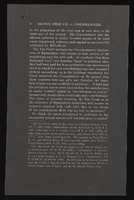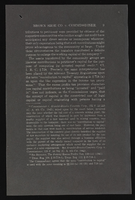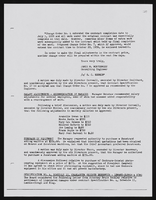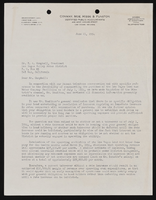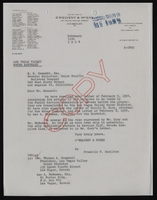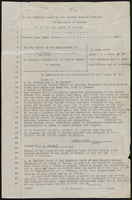Search the Special Collections and Archives Portal
Search Results
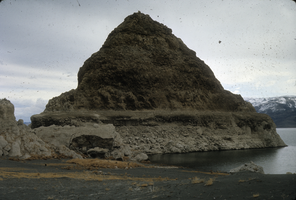
Slide of a tufa deposit in Pyramid Lake, Nevada, circa 1970s
Date
Archival Collection
Description
Image
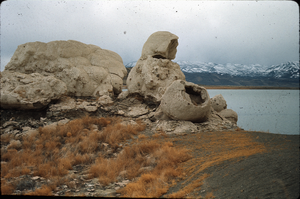
Slide of the rock formation known as The Squaw and Her Basket, Pyramid Lake, Nevada, circa 1970s
Date
Archival Collection
Description
Image
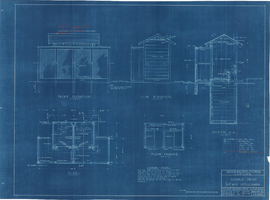
Los Angeles & Salt Lake Railroad Company double privy: architectural drawing
Date
Archival Collection
Description
From Union Pacific Railroad Collection (MS-00397). The scales are noted in the drawing. The bottom of the drawing says, "Material-Finish: All Finish Lumber Unless Otherwise Noted Shall Be [Opsas?] Wood Work Of Vault Shall Be O.P Rough. Exterior Of Privy Including Both Sides Of Door And Door Jamb: Also Wood Lattice Screen On All Sides Shall Be Painted With 3 Coats C.S. Lead & Oil Paint As Directed. Doors Shall Be Hung On 3 1/2" x 3 1/2" Botts. Doors Shall Be Provided With Rim Latch Knob Lock And Iron Barrel Bolt. Revisions: Added Vent Stacks, Seat Cover, Double Floor & Floor Shoe".
The bottom corner of the drawing states, "Union Pacific System L.A. & S.L.R.R. Double Privy 5'x8' With Lattice Screen. Ass't Chief Engineer's Office. Los Angeles, Calif. Drawn By E.C.B. Traced By E.C.B. Checked By F.W.G. Date June 14, 1926. Scale As Noted. Revised May 5. 1927. Drawing No. 15637".
Also written on the drawing: "Two to be built at East Yard, Calif. One ' ' Big Springs, Nev. ' ' Las Vegas, Nev. ' ' Borden, Utah. ' ' Elgin, Nev. 1927. ' ' Dry Lake, Nev. 1927. ' ' Wann ' ' 1928 [crossed out]."
Image
Ashley “Ms. Aye Vee” Vargas oral history interview
Identifier
Abstract
Oral history interview with Ashley “Ms. Aye Vee” Vargas conducted by Laurents Bañuelos-Benitez on October 30, 2018 for the Latinx Voices of Southern Nevada Oral History Project. In this interview, Vargas discusses her experiences growing up on the east side of Las Vegas, Nevada. She describes experiences with racial boundaries, the issue of colorism in the Latinx community, and dealing with Puerto Rican stereotypes. Vargas then talks about her involvement with Student Organization of Latinos (SOL), the Puerto Rican community in Las Vegas, and elaborates on how Puerto Rican culture has been influenced by American culture. Lastly, Vargas discusses the meaning behind her poems, raising awareness about certain issues in the Latinx community, and how Las Vegas is going through an artistic renaissance.
Archival Collection

